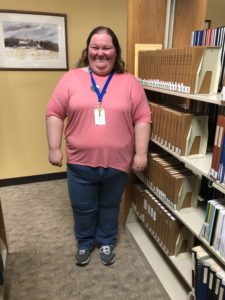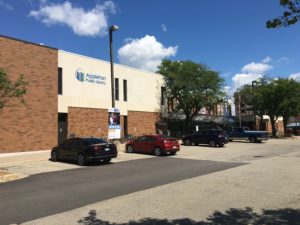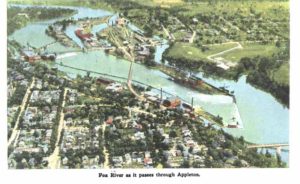by Katie Stilp, Appleton Public Library Local History Librarian

Appleton Public Library is fortunate to be a host site for the Curating Community Digital Collections program this summer. When I began the position of Local History Librarian a year ago, I inherited hundreds of photographs – both digitized and born digital. Our digitized photographs include our historic photo collection, which has set organization and naming conventions, but no documentation about the procedures, how they were scanned, or how the naming convention works. When faced with donated photos from a retiring staff person several weeks into starting my position, I had no clue what to do with the photos to add them to our collection!

At that time, I also realized we needed major help with our born-digital photos, which encompasses hundreds of photographs documenting programs held at the library, community events, and area businesses, schools, and churches. These photographs weren’t organized in a logical way and found in many different areas on our shared staff network, making it difficult to determine just how many photographs we had and what we had photographs of.
A lot of metadata was stored in the file names or the file names were left as the standard “IMG5767” from the digital camera without any metadata to identify what the photograph was. I also realized there was no set procedure for other Library staff members to submit photos to be preserved so if they took photos within the community or of a library event, we run the risk of losing these photos forever unless they are preserved and backed up.

In the three weeks Rebekah Bain has been here, she has worked on writing a digital preservation policy, which outlines why we need to preserve our digital materials, what we are preserving, and how we will ensure long-term preservation.
In addition to our digital photographs, we plan to preserve oral histories, audio, and video recordings, and more digitized texts and photos to add to our digital library, Appleton Memory Project.
We also plan to migrate all of our photos from our first digital library, Fox Valley Memory, to Appleton Memory Project. Before we can do this, it is important to have proper procedures in place and make sure everything is done consistently in regards to naming and organization schemes. We also need to make sure we are backing up our photos properly (using the 3-2-1 rule of storage) and ensuring the files do not become corrupt over time or obsolete as technology changes.

Before the summer wraps up, Rebekah will create an inventory of our born-digital photographs, organize photographs into collections based on subject, and begin the process of inputting metadata into a spreadsheet so we can rename our files using proper naming conventions. To rename our files, we will be using Advanced Renamer, a tool that does bulk renaming of files. This will greatly cut down on the staff time needed to go through and rename each photo to make it fit the new file naming scheme.
Thanks to Rebekah, our mentor Erin Dix, and the CCDC program, we’re looking forward to having a digital preservation policy and organized photo collections soon!
For more information about Curating Community Digital Collections, visit https://recollectionwisconsin.org/digipres.
This project is made possible by the Institute of Museum and Library Services, #RE-85-17-0127-17.



You must be logged in to post a comment.